2021 Hyundai Santa Fe Calligraphy Review: Oh You Fancy, Huh

FAST FACTS
| Engine: | 2.5L I4 Turbo |
| Output: | 277 hp, 311 lb-ft |
| Transmission: | 8DCT, AWD |
| US fuel economy (MPG): | 21/28/24 |
| CAN fuel economy (L/100KM): | 11.0/8.5/9.9 |
| Starting Price (USD): | $28,185 (inc. dest.) |
| As-Tested Price (USD): | $43,835 (inc. dest.) |
| Starting Price (CAD): | $33,324 (inc. dest.) |
| As-Tested Price (CAD): | $49,624 (inc. dest.) |
The Hyundai Santa Fe is currently experiencing a bit of a Rodney Dangerfield moment.
Hyundai’s mid-mid-sizer, and original SUV on these shores, can’t get no respect. Above it sits the Palisade, a most-excellent three-row option that has been earning rave reviews since it released ( from AutoGuide included). Meanwhile, below it sits the 2022 Tucson, a radical rethink of the company’s best-seller, and arguably now the best option in the class.
Get a Quote on a New Hyundai Santa FeDon’t count out the Santa Fe. A comprehensive revamp for this model year, not least of which is a wholly updated engine lineup, keeps it competitive against the likes of the Chevrolet Blazer, Ford Edge, and Subaru Outback. Even better, the Santa Fe now comes in a fancy-pants Calligraphy trim like its big brother, which adds a level of luxury that’s anything but common in this class.
What’s new?
As I alluded to in the intro, the Hyundai Santa Fe entered 2021 with not a single carryover engine. A 2.5-liter four-cylinder now does duty as the entry-level engine, producing 191 horsepower and 181 pound-feet. Higher trims like this Calligraphy tester swap in a turbocharged motor with the same displacement. Horsepower jumps to 277, while torque is a huge 311 lb-ft. Both engines use an eight-speed transmission, but the turbo-four hooks up to Hyundai’s dual-clutch unit instead of a traditional torque converter auto.
SEE ALSO: 2021 Hyundai Santa Fe Hybrid Review: Happier as a HybridThere’s also a hybrid model, which utilizes a smaller 1.6-liter turbo-four working alongside an electric motor. It falls right in between the two gas-only options, producing 227 hp and 258 lb-ft. Unlike most hybrids out there, the Santa Fe uses a six-speed automatic, while AWD is standard. For the fuel-conscious amongst us it’s the obvious choice, and we called it an “ excellent all-rounder” in our review earlier this year. A plug-in hybrid model is starting to trickle into dealerships too, with more power and all-electric range.
It’s all wrapped up in a stylish package. The Santa Fe’s squinty visage remains, with a larger grille now grinning its way across the front bumper. The LED signature creates a pair of Ts across both the headlights and foglights. The changes around back are more modest, with a LED strip connecting the taillights. It looks like an afterthought to capitalize on the current full-width trend. New wheel designs abound, including the very cool two-tone items you see here.
Hyundai has also freshened up the interior. The twin-curve dashboard design remains, but a new Palisade-inspired center console adds an upscale vibe for the front row. That feeling is multiplied when sat in the Nappa leather seating of the new-for-2021 Calligraphy trim.
Luxury digs
With sister brand Genesis genuinely going after the premium market, Hyundai can position its Calligraphy models right below. Just as the Palisade Calligraphy can have folks second-guessing the extra outlay required for something like the Acura MDX, the Santa Fe Calligraphy nips at the heels of the RDX and Lexus NX. Simply put, this rig is positively loaded for its relatively modest $43,835 ($49,624 CAD) asking price.
Those partly-quilted leather seats are comfortable, for example, but they also come with heating and ventilation up front. The cushion is a little flat for my tastes, but your mileage may vary. The center console is a much more impressive piece of furniture now, too. It might look like button overkill at first, but it’s all logically laid out. Infotainment controls up top (with volume knob, huzzah!), climate bits just below that, and driving controls taking up most of the space. The knurled dials are a nice touch, as is the textured material used here. Hyundai could’ve used piano black, and I’m happy it didn’t. I also appreciate the mailbox slow for the wireless charger, since it forces the screen away from the driver.
Say goodbye to a traditional shifter: Hyundai has given the Santa Fe a push-button setup like so many of its other vehicles. The shift-by-wire system frees up some storage below the center console. Shifts do require a considered poke, though; on more than one occasion Park hadn’t engaged when I thought it had.
Space in the second row is adult-friendly, though tall folks may find the 37.7 inches (958 mm) of headroom limiting. Curiously, the newer Tucson offers more rear headroom and barely less rear legroom (41.3 inches against the ‘Fe’s 41.7). Chalk it up to a 0.4-inch difference in wheelbase between these two, even though the Santa Fe is 188.4 inches is over half a foot longer than the Tucson (182.3 inches). There’s more shoulder and hip room here though, and that length pays off with a large, flat cargo space. There’s 36.4 cubic feet (1,032 liters) of storage with all seats occupied, and very nearly double with them down (72.1 cu-ft / 2,041 L).
SEE ALSO: Hyundai Tucson Hybrid vs Toyota RAV4 Hybrid Comparison: Fuel-Sipping Family HaulersAll the bells and whistles
Befitting a range-topper, the Calligraphy comes loaded with tons of tech. The 10.25-inch touchscreen might lack the wireless Apple CarPlay and Android Auto of the standard 8.0-inch unit, but the display is crisp and easy to navigate. Another 10.25-inch screen sits ahead of the driver. It’s customizable, with different themes that can be tied to specific driving modes. There’s also a head-up display, which can display current speed as well as GPS directions. I’m always a fan of a good HUD. My only complaint here is that it requires a bit of digging in the menus to turn it off, if you want to.
A large panoramic moonroof stretches right to the second-row headrests, ensuring plenty of natural light in the cabin. The 12-speaker Harman/Kardon sound system is bangin’, too.
Hyundai also fills up the Santa Fe with all manner of driving assists. Every single 2021 model comes with automated emergency braking, with pedestrian, cyclist, and junction-turning detection. On top of that are lane-keep and -follow assists, driver attention warning, auto high beams, rear seat occupant alert, and adaptive cruise control. Blind spot monitoring, rear cross-traffic alert, Safe Exit Assist, and rear parking sensors join the lineup from the next trim up. The Calligraphy ladles on remote smart parking, Highway Drive Assist, and a 360-degree camera.
Santa fleet (of foot)
The turbocharged 2.5-liter engine provides the Santa Fe with more than enough oomph to handle the daily grind. Hyundai doesn’t post acceleration times, but my seat-o-the-pants-ometer suggests a run up to highway speeds in the mid-6s, which is plenty quick for something in this segment. Want quicker? Go grab an Edge ST—and the number to a good chiropractor. At low speeds the DCT occasionally hunts for the right gear, but once under way it shifts quickly and unobtrusively. It does its best work in the mid-range, where the Santa Fe can surf along on a thick wedge of torque.
SEE ALSO: 2019 Ford Edge ST ReviewOn its 19-inch wheels, the Santa Fe rides with fluidity. The steering is expectedly light, but it is accurate. This being 2021, there are selectable drive modes, but the ‘Fe makes most sense in Smart and Comfort; Sport has it feeling over-eager. This is a cruiser, plain and simple. Bumps big and small are handled well, with the Hyundai staying composed over everything I threw at it in our 250 miles (400 km) together. With more sound deadening and thicker glass lamination, the Santa Fe stays commendably quiet at highway speeds.
Fuel economy is rated at 21 mpg city, 28 mpg highway, and 24 mpg combined. (Canadian figures are 11.0, 8.5, and 9.9 L/100 km). During the week, the Calligraphy posted 23 mpg (10.2 L/100 km).
What’s the competition?
The 2021 Hyundai Santa Fe lines up against the Chevrolet Blazer, Subaru Outback, and Toyota Venza. The Chevy is the athlete of the group, with a driver-oriented ride. Subaru’s Outback is the rough-and-tumble choice here, especially with its latest Wilderness trim. If you plan on regularly traversing tarmac-less paths, the Santa Fe isn’t the best choice—no, not even the XRT, which features more rugged styling but no mechanical upgrades. Meanwhile, the hybrid-only Venza highlights a gap in the Santa Fe lineup. Toyota’s reborn mid-sizer offers up near-Lexus levels of interior ambiance. While this Calligraphy tester can match that, Hyundai only offers the top trim with the turbo 2.5-liter.
Prices start from $28,185 ($33,324 CAD), including destination, for a 2.5-liter front-drive Santa Fe. Adding AWD requires an extra $1,700 ($2,000 CAD), except on the hybrid, where it’s standard across the board. (In Canada, AWD is also standard on every trim above base.) This loaded tester rings in at $43,835 ($49,624 CAD). At that price, you could consider lower trims of the Acura RDX or Lexus NX, but neither would be as spacious nor as well-equipped.
SEE ALSO: Subaru Outback vs Subaru Forester ComparisonVerdict: 2021 Hyundai Santa Fe Calligraphy Review
The 2021 Hyundai Santa Fe Calligraphy has carved out its own section of the crowded Hyundai SUV lineup. Come for the extra power and cargo space over the Tucson; stay for the swanky Calligraphy trim. For those with older kids, or even ones that have recently left the nest, the Santa Fe is a well-rounded mid-sizer that offers much of the luxury experience without the associated price tag. A marriage of the Calligraphy trim to the fuel-sipping hybrid powertrain would net it maximum respect, though.
Become an AutoGuide insider. Get the latest from the automotive world first by subscribing to our newsletter here.
LOVE IT
- Strong turbo power, no penalty at the pumps
- Calligraphy feels properly lux
- Power-folding second row
LEAVE IT
- Not much more spacious than smaller Tucson
- Push-button shifter needs solid jabs
- Hybrid's gas savings are hard to ignore

Kyle began his automotive obsession before he even started school, courtesy of a remote control Porsche and various LEGO sets. He later studied advertising and graphic design at Humber College, which led him to writing about cars (both real and digital). He is now a proud member of the Automobile Journalists Association of Canada (AJAC), where he was the Journalist of the Year runner-up for 2021.
More by Kyle Patrick

























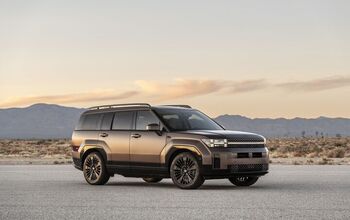




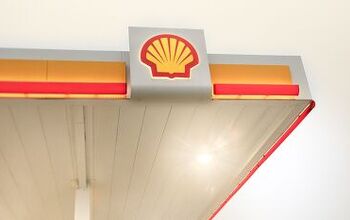

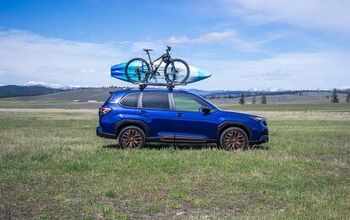
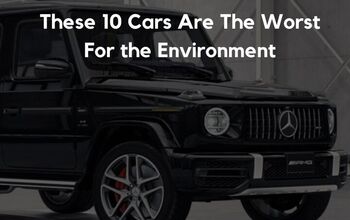
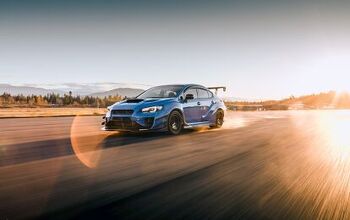
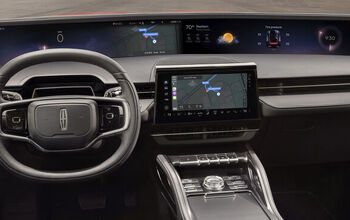
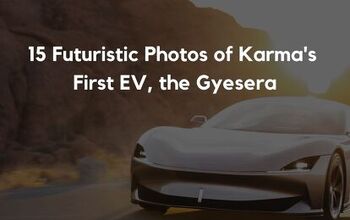
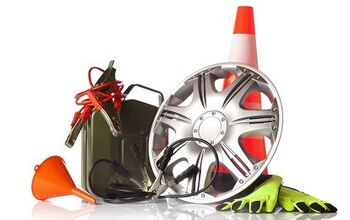
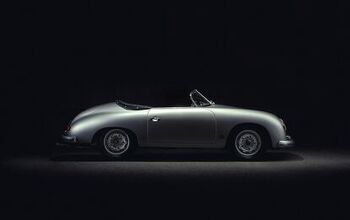
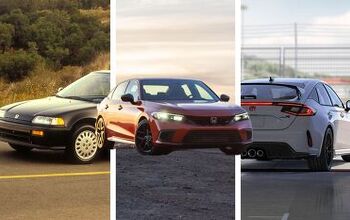
Comments
Join the conversation